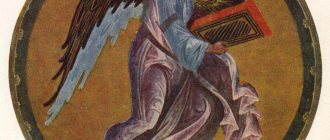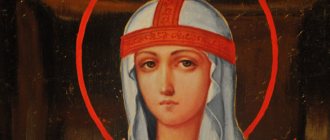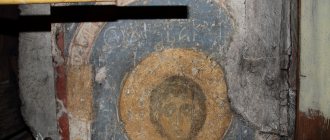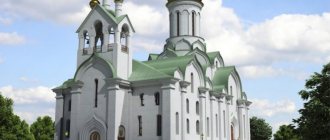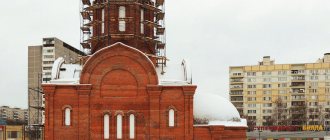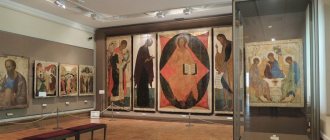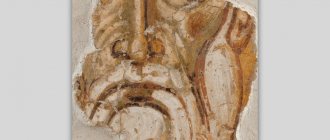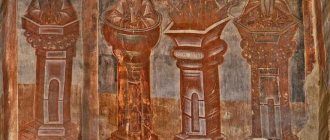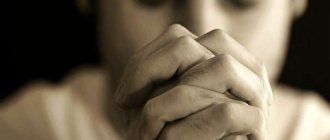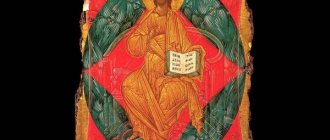Andrey Rublev. Zvenigorod history
The names of two major, deeply revered Orthodox saints - the Venerable Savva Storozhevsky and Andrei Rublev - are firmly associated with the picturesque places of Zvenigorod near Moscow. But the memory of Saint Savva, a disciple of Sergius of Radonezh, abbot of the Nativity Monastery on Mount Storozhe, never dried up in these places. But in order to firmly connect the name of the great icon painter with Zvenigorod, researchers had to work hard. And the story of Andrei Rublev’s “registration” in this town near Moscow is almost a detective story.
Zvenigorod secret
This story began in 1918. Art historians lacked evidence of the hypothesis put forward - the frescoes discovered fragmentarily in the Assumption Cathedral of Zvenigorod were executed by the brilliant Andrei Rublev. To substantiate this hypothesis, it was necessary to find here other works by the master that would clearly say: yes, Rublev worked in Zvenigorod. After all, neither the chronicles nor other sources provide any information about this. Yes, they talk about the works of the famous icon painter in Moscow, in Vladimir, in the Trinity-Sergius Monastery. And not a word about Zvenigorod.
Evangelist John in the form of an eagle. Miniature of Andrey Rublev. Gospel of Khitrovo, XIV century.
The participants of that scientific expedition in 1918 were extremely lucky. Three icons were brought to light: images of the Savior, Archangel Michael and Apostle Paul - the so-called Zvenigorod rite of Andrei Rublev. These masterpieces of Russian icon painting have become the greatest discovery of domestic and world art history. But how were they found? The official version was: under a pile of wood in a barn. Only recently it became clear that a local priest drew the attention of scientists to the ancient icons temporarily stored in the storeroom. And the barn with “ownerless” boards appeared, obviously, as a cover for the fact of seizure.
Be that as it may, the Zvenigorod rank posed a riddle to art historians. Three of his icons represent part of the deesis - the main row of icons in the iconostasis. This is the so-called “prayer” - the central figure of Christ is flanked in prayer by the Mother of God, John the Baptist, the archangels Michael and Gabriel, the apostles Peter and Paul, and the saints. The number of upcoming icons and, accordingly, depends only on the size of the temple and the width of the altar partition. The Zvenigorod rite, which included the image of the Apostle Paul, was supposed to consist of at least seven icons. So, scientists have doubts - could it fit the full width in the Assumption Cathedral? Then they answered “no” to this question and began to look for another temple, which originally belonged to the Rublevsky Deesis. We tried different options, and all subsequent searches denied the Zvenigorod rank of Zvenigorod origin. So did Rublev work in Zvenigorod?
The question is complex and somewhat mysterious. We will return to it below.
In the Assumption Cathedral
No less mysterious is the origin of Andrei Rublev himself. Biographical information about the great artist is so insignificant that researchers simply speculate on some pages of his life. His ancestral roots could be in Radonezh, and in Pskov, and in the Tver regions, and in Belozersk, and in others. Not a native Muscovite, Rublev as an artist could take his first steps on Moscow soil in the Trinity-Sergius Monastery, where he took monastic vows. Or he could have done it in the grand-ducal art workshops of the Kremlin, where he worked on decorating books with miniatures. It is possible to combine these hypotheses by suggesting that the layman Rublev left the Kremlin workshops in the late 1390s to become a monk in the monastery of Sergius of Radonezh. And only after that he became known as a master of large iconographic forms. And this could have happened, for example, at the instigation of Savva Storozhevsky, who in 1399 moved from the Trinity Monastery to Mount Storozha near Zvenigorod. Prince Yuri of Zvenigorod invited Savva there, asking the elder to found a new monastic monastery.
Prince Yuri, the second son of Dmitry Donskoy, was considered by his father’s will to be a contender for the Moscow throne, the heir of his elder brother, Grand Duke Vasily I. Zvenigorod, the largest of the Moscow region cities at that time, was the capital of his appanage principality. Through the efforts of Yuri, in those years it turned into one of the cultural centers of the Moscow land. The ambitious prince of Zvenigorod, who competed with his older brother, did not want to yield to Moscow in anything. He ensured the greatness of his appanage capital with a broad program of construction and decoration of the city, inviting for this the best craftsmen - architects, artists, craftsmen. He erected a powerful, impregnable wooden fortress on a hill above the Moscow River (princely Kremlin - Gorodok). It contains the white-stone Assumption Cathedral, a wonderful example of early Moscow architecture (unfortunately, it has now lost much of its beauty). In the suburban Savvin Monastery he built a stone Nativity Cathedral. The main thing in this architectural and artistic program was, of course, the spiritual component.
As the godson of Sergius of Radonezh and the spiritual son of Savva Storozhevsky, a student of both of them, a church benefactor and temple builder, Prince Yuri was deeply imbued with the idea of the religious transformation of Rus'. The inspirer of this national revival on the paths of holiness, the unity of the people in an impulse towards Christ, towards transformation into Holy Rus' was Sergius of Radonezh. He also became one of the main ideologists of the liberation of Rus' from Tatar-Mongol slavery. Sergius blessed Dmitry Donskoy for a mortal battle with the Tatar horde of Mamai. Both the Radonezh abbot himself and his contemporaries considered this battle on the Kulikovo field to be a great sacrificial feat of Rus', the martyrdom of Russian soldiers “for the holy churches and for the Orthodox faith.” The entire era in which Rublev lived is permeated with the memory of the significant event of the Kulikovo victory.
As the son of Dmitry Donskoy and heir to the Moscow throne, Prince Yuri saw his duty as continuing the work of his father and “mentor of the Russian land” Sergius - to unite Rus' for further victories. This is evidenced by the program of fresco painting of his Assumption Cathedral in Gorodok. This painting was created around 1401-1404. Researchers have long had no doubt that some of the frescoes belong to the brush of monk Andrei. This is the very first major work of the famous master that has come down to us. Perhaps the name of the promising artist, a Trinity monk, was suggested to Prince Yuri by Savva Storozhevsky. The content of the temple murals was, of course, approved by Yuri Zvenigorodsky himself.
Over the centuries, little has survived. The best fragments of the frescoes are located on the eastern pillars of the temple, delimiting the altar part, on their faces facing the center of the cathedral. Rublev is the author of the medallions with the martyrs Florus and Laurus. These two images closed the frieze, which encircled the entire eastern, altar wall of the temple and contained images of Christian martyrs for the faith. If we remember that Sergius gave his blessing for the Battle of Kulikovo on August 18, on the day of remembrance of Florus and Laurus, then the intention of the temple painting will be clear. At least a significant part of it is the glorification of the sacrificial feat of the Russian people who went to the Kulikovo field to drink the mortal cup there and accept the crowns of martyrdom “for their friends.”
In all the future work of Andrei Rublev, “an extraordinary icon painter,” a deep thinker and theologian, “exceeding everyone in wisdom,” a humble ascetic, a man of prayer and a most lyrical artist, this theme of heroism, drama and sacrifice of the era will run through. An amazing time in the history of the country, when scattered, wounded Rus' gathered itself together and restored its spiritual strength.
"Trinity"
Savvino-Storozhevsky Monastery, Zvenigorod. Photo www.lori.ru
A few years later, around 1410, fate would again bring the monk Andrei to Zvenigorod. By that time, he was already a famous, recognized master icon painter and mural painter, executor of important princely orders, who, together with his friend Daniil Cherny, painted the former main temple of Rus' - the Assumption Cathedral in Vladimir. Two years later, in 1408, Rus' was subjected to another Tatar invasion. Many cities and monasteries were ravaged and burned, many churches needed restoration and new decoration. The Zvenigorod fortress was too tough for the “Hagarians” (its walls on high ramparts, coated with clay, could not be set on fire). But the Savvino-Storozhevskaya monastery was probably burned. Like the Trinity-Sergius, the restoration of which took the Trinity abbot three years. Of course, both princes, Moscow and Zvenigorod, donated to the revival of the desolate Sergius Monastery. But, according to one of the modern versions, the contribution of Yuri, who burned with the zeal of faith and ambition, turned out to be more invaluable.
Zvenigorod rite of Andrei Rublev: Archangel Michael, Savior, Apostle Paul. 1408
This contribution may have been the same Zvenigorod rite, the Deesis, commissioned by the prince to the first icon painter of Rus', Andrei Rublev. The author of this version (art critic V.V. Kavelmacher) believes that the Zvenigorod rite was written for the wooden Trinity Church, built in 1411. 12 years later, when the stone Trinity Church was erected on the site of the wooden one, Rublev’s Deesis, for a number of reasons, did not find a place in it. After some time, he returned to Zvenigorod, where he continued to exist as a local iconostasis.
But there is another version proposed by ruble expert V.A. Plugin. According to it, Andrei Rublev wrote the Zvenigorod rite... after all, for the Assumption Cathedral in Gorodok, where it was found. The circle of searches is closed. Prince Yuri wished that in his home church there would be an iconostasis of the famous isographer, a great master of “theology in colors.” For this, the prince did not spare the integrity of the fresco painting. After all, the new wide Deesis stood from wall to wall, covering the very pillars with Florus and Laurus (which is why scientists had doubts about the rank belonging to this temple). And it consisted not of seven icons, but of at least nine.
Trinity. Icon of Andrei Rublev. 1425
Be that as it may, both researchers agree on one thing. The Zvenigorod tier constituted one iconostasis ensemble with the pinnacle work of St. Andrew - the icon of the “Life-Giving Trinity.” They are similar in many stylistic features, color features, compositional and graphic characteristics, and finally, perfect execution. Time separated them, but before that they represented an indissoluble unity. The meek Savior, perfect in his humanity, the Archangel Michael, filled with subtle lyricism, the Apostle Paul, deep in himself - and the unearthly harmony of three angels, the image of the indescribable trinity of the Divine. Iconographic hymn to Divine love...
This means that “Trinity,” even if it was not born in Zvenigorod, was in any case written by order of the Zvenigorod prince. And it was created “in praise” of Sergius of Radonezh, with whom special veneration of the Holy Trinity began in Rus'. We can say that Sergius saved Rus' by directing its gaze to the Trinity, teaching love and overcoming the “hateful discord of this world,” spiritual and national unity in the image of the Trinity.
"They were begged"
Monk Andrei was one of Sergiev’s many “chicks of the nest”, a direct successor of his prayerful exploits and service to his neighbor, which meant the entire Orthodox people of Rus'. It is not surprising that in the 1420s the already venerable elder Andrei was called from Moscow to the Trinity Monastery, where a great event took place. Sergius of Radonezh is glorified as a saint, and his newfound relics are transferred to the new stone Trinity Church. Prince Yuri Zvenigorodsky again acted as trustee of the construction. But the sovereign icon painters Andrei Rublev and Daniil Cherny received the order for painting the temple and its iconostasis not from him, but from the Trinity abbot Nikon. “The Legend of the Holy Icon Painters” testifies that “wonderful virtuous elders and painters” were “begged” by Nikon to take on this great work. And he adds: both icon painters “were formerly in obedience to the Monk Nikon.” From this detail we know that Andrei and Daniel were once listed as monks of the Sergius Monastery, after the death of Sergius himself (in 1392). And in another source, Daniel is called Andrei’s teacher. Most likely, this was the spiritual guidance of an older, more experienced monk by a younger, novice monk. After all, both were icon painters and, probably, when Andrei appeared in the monastery, they immediately “found” each other, shared one cell for two, worked together, fasted and prayed - until the end of their lives.
Angel. Miniature of Andrey Rublev. Gospel of Khitrovo, XIV century.
Why did Abbot Nikon have to beg them? Both were already old. Perhaps they were overcome by infirmities and illnesses. Or maybe in the last years of their lives they intensified their prayer work, completing or significantly limiting their artistic work. But it is precisely this detail - “they were begged for” - that suggests that Rublev’s creative flowering and maturity as an icon painter were left behind. After all, an artist who still feels the creative forces within himself and has not said the “most important thing” cannot refuse work that allows him to express precisely this “most important thing.” The main thing for Rublev was his “Trinity”. And it was not born in the mid-1420s, as this icon was previously dated, but earlier. The new “praise” to Sergius from the famous icon painters was the Church of the Holy Trinity, painted and decorated under their leadership.
A crowded team of artists was involved in this work. Andrei and Daniil only controlled this “choir”, in which each of the talented icon painters, gathered from everywhere by Nikon, led his own part. Rublev was responsible for the overall design and drawing of the compositions in this iconostasis: most likely, he acted here as a flag bearer, i.e., he outlined the design of the icons. But not only. For example, the icon “The Appearance of an Angel to the Myrrh-Bearing Women” definitely says that Rublev also created new, previously unprecedented iconographic subjects.
The Trinity iconostasis can still be seen in the cathedral. This is the only iconostasis associated with the name of Andrei that has reached us in its entirety. But the frescoes were knocked down and rewritten in the 17th century. One can only hope with confidence that the later paintings repeat the layout and composition of the murals of the 1420s.
Andronikov Monastery
The repose of the icon painter Andrei Rublev in the Andronikov Monastery. Book miniature
Carrying out commissioned works in different places of the Moscow land, monks Andrei and Daniil invariably returned to their native Spaso-Andronikov Monastery on the Yauza. Now it is almost the center of the capital, but then Moscow was located within the current Boulevard Ring and the Andronikov monastery was a suburb. The life of Sergius of Radonezh (involved in the establishment of this monastery) depicts the monk Andrei as an honest elder who enjoys honor and authority in the monastery. He was one of the “cathedral elders” who, together with the abbot, managed the life of the monastic community. It was Andrei who in 1427 became one of the inspirers of the construction of the stone Spassky Cathedral in the monastery. As V.A. Plugin writes, Rublev “played the role of not only the leading master - performer of artistic works, but also a kind of ideologist who determined much in the system and structure of the ensemble” of the cathedral.
The Andronikov Monastery itself, which now houses a museum named after the great icon painter, is a place of peace and quiet. Slowly walking around the temple, darkened by time, but still just as beautiful and picturesque, you can imagine how the hand of the humble monk Andrei touched these stones. How he sat on the platform above the entrance to the temple and painted his last work - the image of the Savior Not Made by Hands (as depicted in a 17th-century miniature). And how, having already left this temporary life, “in a blaze of glory” he appeared in the cell of the ill Daniel, calling him to “eternal and endless bliss...”.
How to get to Zvenigorod:
By bus No. 881 from the Strogino metro station, by bus No. 455 from the Tushinskaya metro station, by bus No. 452 from the Kuntsevskaya metro station. You can also take the train to Zvenigorod station, but from there you will have to get to the city by taxi or local bus. The former Gorodok, now a wooded hill with the remains of ramparts and the Assumption Church, is located on the western outskirts of the city. Two kilometers from it, along the highway to the southwest, is the Savvino-Storozhevsky Monastery.
Icon "Lord Almighty". First half of the 13th century
The image of Christ blessing is the oldest icon kept in the museum. It belongs to the rarest works of the era of pre-Mongol Rus' that have come down to us. Until 1975, it belonged to the artist and graphic artist Vasily Sitnikov, who discovered it from one of the illegal dealers in a deplorable state: the icon was completely covered by numerous late recordings. Leaving Russia forever, Sitnikov bequeathed the image of the Savior to the Andrei Rublev Museum, where the icon was opened in a restoration workshop and a real masterpiece was discovered.
“Old Testament Trinity” from the Joseph-Volokolamsk Monastery. Master Paisiy. 1484–1485
The author was most likely inspired by Andrei Rublev’s “Trinity,” which was a high model for all Russian icon painters. It is believed that this icon was created with the personal participation of the rector of the Volokolamsk monastery, St. Joseph of Volotsk, by whose order the main temple of the monastery, the Assumption Cathedral, was decorated. The life of St. Joseph indicates the dates of the consecration of the temple and the names of the artists who worked on it, including the master Paisius, the author of the icon. Such mentions of authorship are very rare for medieval art.
"Saint John the Baptist." First third of the 15th century, Moscow
Scientists have not been able to establish the author of this icon, but they suggest that it was one of the students or followers of Andrei Rublev himself.
This icon was among the main exhibits of the museum on the day of its grand opening to visitors - September 21, 1961. This day was described by Irina Aleksandrovna Ivanova, one of the first and oldest employees of the museum: “After the end of the rally, the restored Spassky Cathedral and the exhibition building of the museum (former garages) opened their doors. The cathedral featured the icon “John the Baptist” from the St. Nicholas Monastery, the restoration of which was carried out by Vasily Kirikov.”
Double-sided icon “Our Lady Hodegetria and St. Nicholas the Wonderworker.” First quarter of the 15th century
The double-sided icon, which took part in church services with a procession of the cross, is one of the best works of the Tver icon-painting tradition. It came to the museum in 1967 after an expedition of scientists: it was taken from the church in the village of Vasilievsky, Staritsky district, Tver region.
During the Soviet years, this church, like many other rural churches, was converted into a granary. Often in churches used by collective farms for “utilitarian” purposes, ancient monuments remained, which, like this icon, were found in littered altars or in the upper rows of the iconostasis, where it was difficult to reach.
"Reverend Sergius of Radonezh." Master Theodosius. Around 1510
Master Theodosius is one of the sons of the famous icon painter Dionysius, with whom he painted the Cathedral of the Nativity of the Virgin Mary in the Ferapontov Monastery. He probably created the icon of St. Sergius of Radonezh when he headed an icon-painting workshop after the death of his father. It was painted for the Assumption Cathedral in Dmitrov, where it was located in the local row of the iconostasis near the northern wall. This is a unique monument of iconography, illustrating in detail the life of the most famous Russian saint in small stamps around the life-size image.
